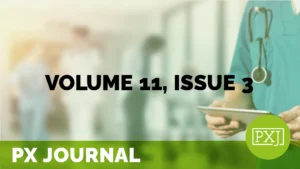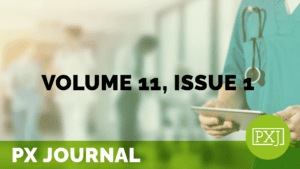“My lungs on the x-ray looked like ground up glass”: A COVID Recovery Story

Bob Pollard was a healthy 62-year-old when he was diagnosed with COVID-19, in the hospital and unable to breathe with a high likelihood of not making it through the night. Ultimately, he spent 17 days on a ventilator and a combined three months in the hospital and a rehab facility. Bob’s tough journey back to health propelled a complete change of career. Listen as he shares how he went from COVID-19 patient to Patient Experience Professional.
Related content
-
 Patient Family & Community Engagement
Patient Family & Community EngagementAn Exploratory Qualitative Study of Perinatal Experiences in an Acute Setting during Early Phases of the COVID-19 Pandemic
The COVID-19 pandemic was highly disruptive for people delivering babies in-hospital and for obstetrical healthcare professionals. The purpose of this study was to explore the experiences of people with or without COVID-19 giving birth in a community-based hospital to provide patient insight to obstetrical care providers regarding the services/policies used during the pandemic. Nine interviews
Learn more -
 Patient Family & Community Engagement
Patient Family & Community EngagementExperiences of Psychosocial Support in Group Rehabilitation Interventions from Adults with Chronic Conditions – A Qualitative Systematic Review
Psychosocial support in group rehabilitation interventions can provide adequate social support and a basis for self-management. Both healthcare professionals and peers have invaluable roles in helping patients with chronic conditions adapt to their life situation. Interventions should facilitate knowledge sharing and help patients take responsibility for self-management. Furthermore, participants should be able to choose the
Learn more -
 Patient Family & Community Engagement
Patient Family & Community EngagementLived Experiences of Cancer Patients Who Chose to Stop Receiving Treatment
The study aimed to understand the lived experience of cancer patients who abandon treatment. Four semi-structured interviews were conducted, and the data was examined using interpretative phenomenological analysis. It resulted in four superordinate themes: (i) ‘Lack of knowledge about cancer’ dealt with patients’ knowledge and perceptions about their cancer. (ii) ‘Hopelessness with oneself and God.’
Learn more
